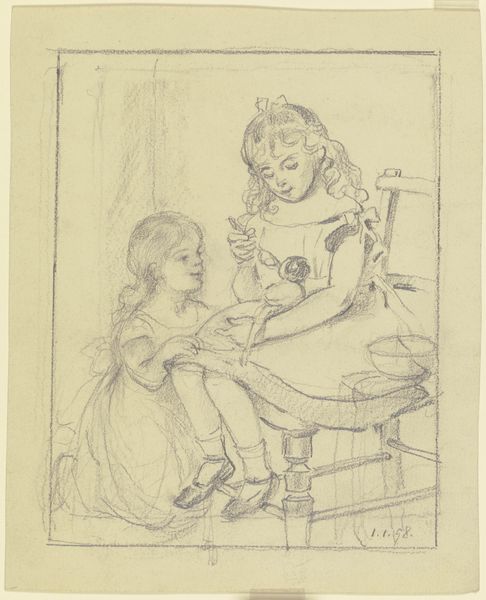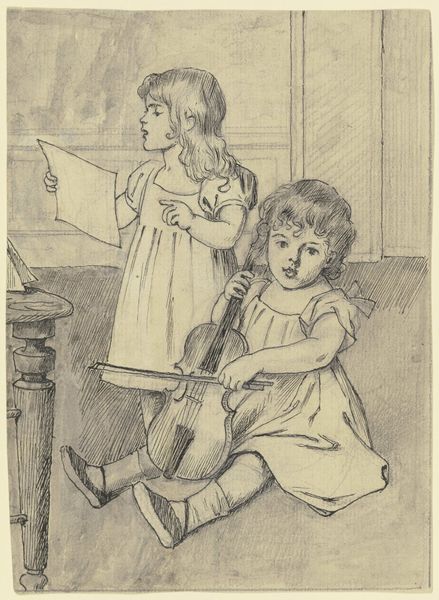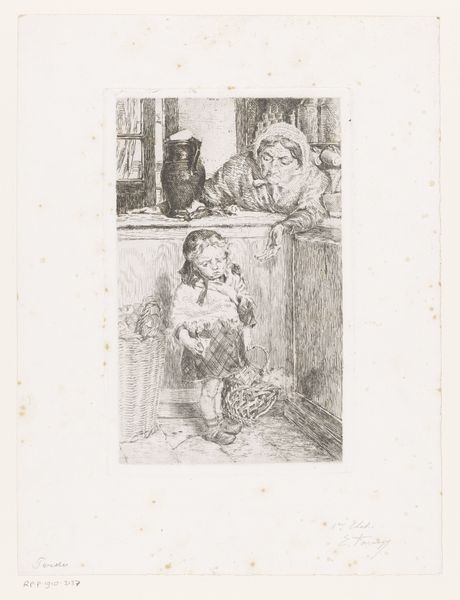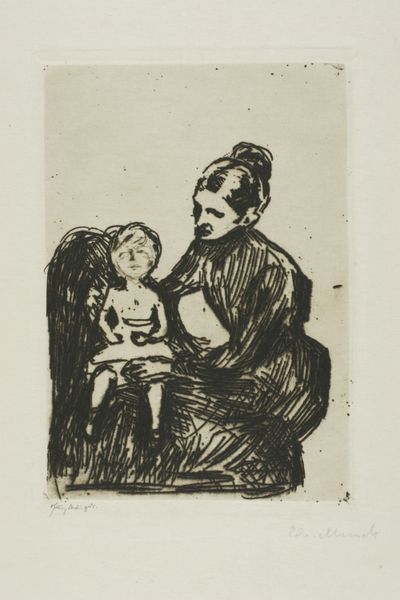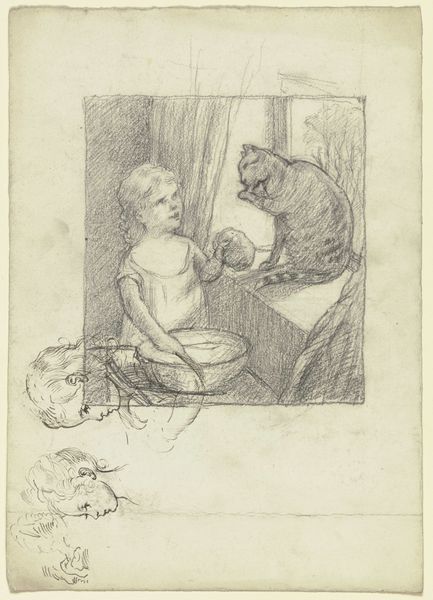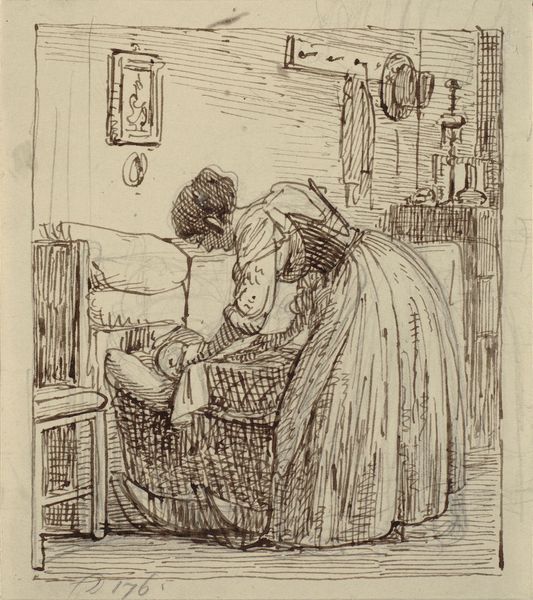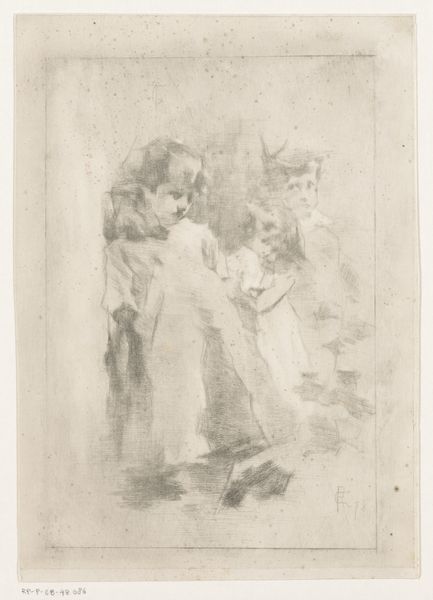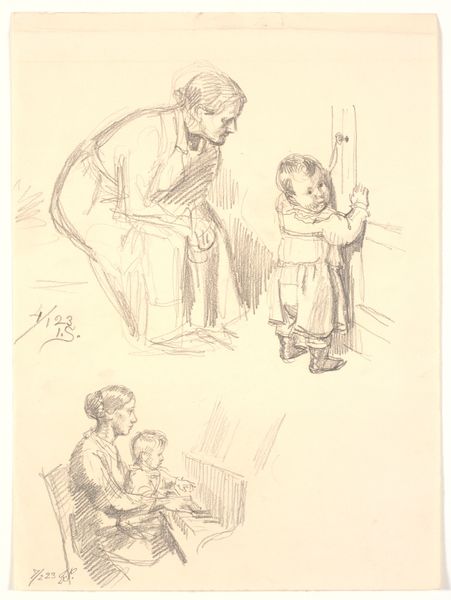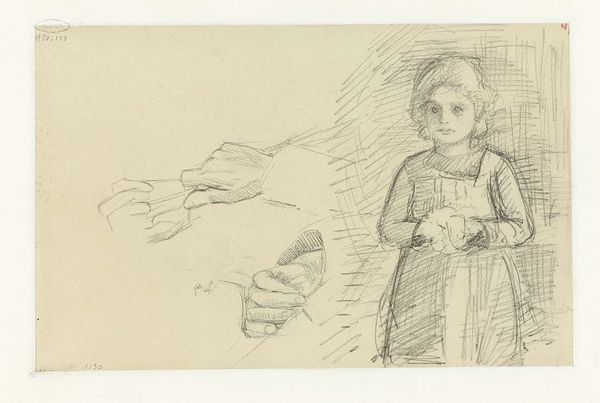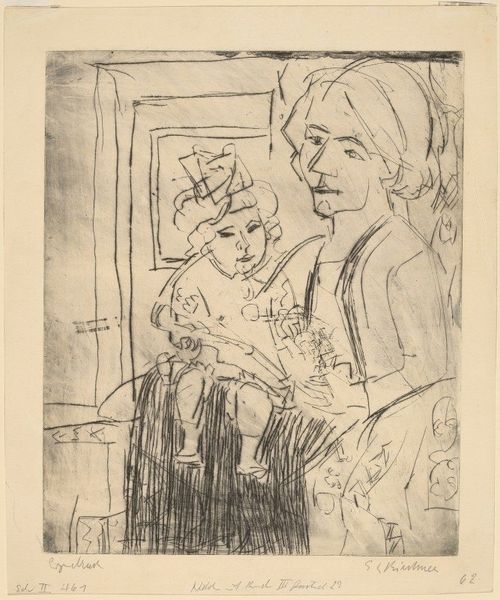
print, etching, engraving
#
portrait
#
neoclacissism
#
mother
# print
#
etching
#
pencil sketch
#
figuration
#
genre-painting
#
history-painting
#
academic-art
#
engraving
Dimensions: height 120 mm, width 94 mm
Copyright: Rijks Museum: Open Domain
Curator: Look at this, isn't it touching? "Een moeder zet een knoop aan de broek van haar zoon"—"A mother buttons her son's pants." The artist is Louis Bernard Coclers, working somewhere between 1756 and 1817. Editor: There's a gentle intimacy here. The etching is so delicate; you can almost feel the softness of the child's cheek, even if the execution seems quite… basic, no? Curator: I wouldn’t use “basic.” We are observing an academic study in figuration with the distinct embrace of genre painting. As an etching, the creation of the artwork required Coclers to manipulate metal plates through chemical processes, considering acid's effects on line quality and depth to arrive at the printing of the edition on paper. That makes it technically sophisticated. Editor: True, true. The process is fascinating when you describe it like that—it gives gravitas to the ordinary. I find the relationship interesting, too. The child's expression seems more mature, almost knowing, than the mother, who's all care. Curator: The depiction does defy conventional sentimentalism; however, we should consider societal dynamics influencing artistic choices and depictions of domesticity. Notice how Neoclassical influences, a prominent movement of that period, appear blended within a genre-focused portrayal, questioning accepted narratives. Editor: Maybe that adds a subversive note, questioning authority in the very act of representing such a banal domestic scene. Curator: Exactly. Consider too the function of printed works: it invites dialogue regarding who has access, thus making apparent the processes of class and taste formation in 18th-century print culture. Editor: I can't help but appreciate the tenderness. I get carried away imagining similar scenes between my children and me. Curator: Yes. And by contextualizing Cocler's creation we gain insights into 18th-century workshop dynamics, marketplace considerations, or even technological experiments that add profound layers to even the seemingly most heartfelt art piece. Editor: A good button, well fastened, makes a revolution then? Thank you; it gives us much to consider!
Comments
No comments
Be the first to comment and join the conversation on the ultimate creative platform.
